When Sparks & Embers are Coming out of Your Chimney, Here’s what to Do
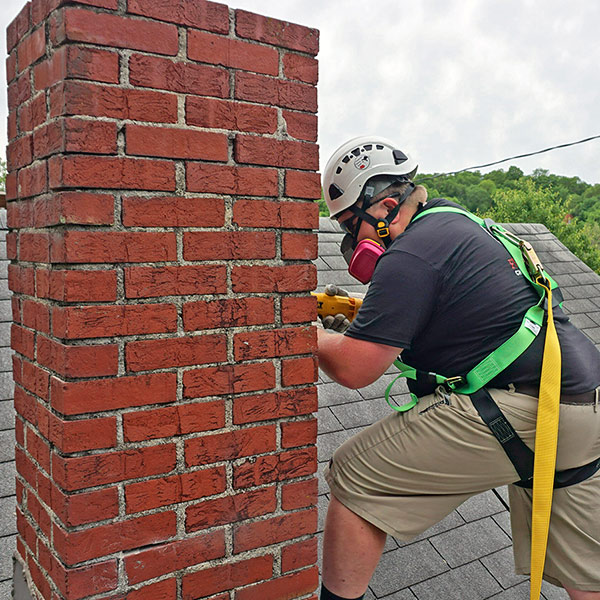 A clean and properly maintained chimney should never have fiery sparks popping out of its top. Unfortunately, not
A clean and properly maintained chimney should never have fiery sparks popping out of its top. Unfortunately, not
all chimneys are clean and maintained. Fluesbrothers Chimney are clean and maintained. Fluesbrothers Chimney& Fireplace offers the following advice should you experience this potentially dangerous problem.
Call 911
This is the first step, because, although the situation may not seem dire, it could be. Assuming there’s a fire in the chimney, you can’t solve the problem on your own. Bring in trained emergency personnel.
Extinguish the fire in the fireplace
This is the second step – If you can put out the fire safely do so. If not, move to step 3.
Leave the house
Leave with all people and pets living in the home. If you feel it’s necessary, take with you any valuables that you can’t afford to lose. It probably won’t come to this, but use your judgment.
Why all the panic?
The panic is because, if sparks and embers are coming out of the top of your chimney, an active chimney fire is occurring, even if you don’t see actual flames.
Along with fiery debris exiting the chimney, a chimney fire often gives other signs such as:
- A strange tapping or clicking noise
- A rumbling sound like from a faraway train
- Excess dense smoke coming from the top of the chimney or the fireplace
What causes chimney fires?
By far the most common cause of chimney fires is creosote that ignites in the chimney flue. Creosote is formed by the condensation of smoke, and it accumulates inside your chimney every time you use your fireplace.
Preventative steps you can take
Since creosote originates in smoke, it follows that creating less smoke with your fires will benefit you. How can you do this?
- Burn only dry firewood, which is much less smoky than damp, unseasoned wood.
- Never burn cardboard, sheetrock, plastics, metals, packing materials, clothing or anything else. Non-firewood materials can produce excess smoke and burn too hot for your system.
- Burn hardwoods such as oak, walnut and elm, which make less smoke than pine, redwood, spruce and other softwoods.
- Have your chimney cleaned once a year.
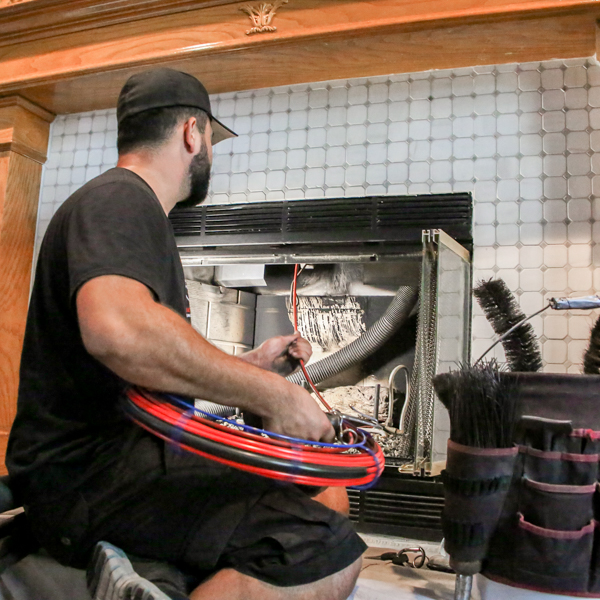 How professional chimney sweeps deal with the problem
How professional chimney sweeps deal with the problem
Chimney technicians are trained in the use of a variety of industry-grade tools to safely and effectively remove creosote from your chimney flue. An annual chimney sweep is an excellent step toward preventing chimney fires.
A clean chimney not only is less prone to a fire, but it’s also less likely to cause smoke backups, which often are caused when a flue is narrowed by creosote and outside debris. The real danger with smoke in your home is carbon monoxide, which is invisible, odorless and potentially fatal when inhaled.
Have your chimney inspected once a year
Annual chimney inspections go even further toward keeping your chimney clean and safe. Licensed chimney inspectors understand your system inside and out and will alert you to creosote issues as well as any damage or malfunction that is occurring.
Note that if your chimney is sending sparks and embers into the air, arrange for a special inspection as soon as the fire has been properly dealt with.
A clean chimney is a happy chimney
Fluesbrothers Chimney & Fireplace helps residents in the Kansas City, KS, region keep their fireplaces clean and happy. We provide licensed chimney inspections, chimney cleaning and all types of chimney repair work.
Speak with a chimney expert by calling (913) 236-7141, or reach us through our contact form.
The post When Sparks & Embers are Coming out of Your Chimney, Here’s what to Do appeared first on Fluesbrothers Chimney Service.
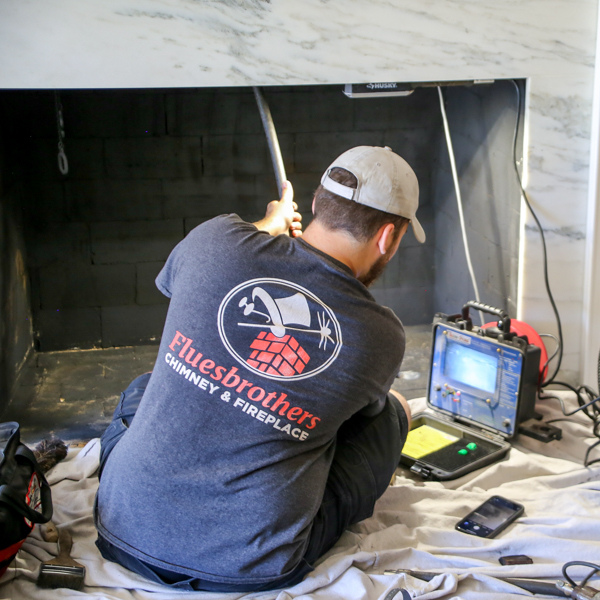 Have your chimney inspected
Have your chimney inspected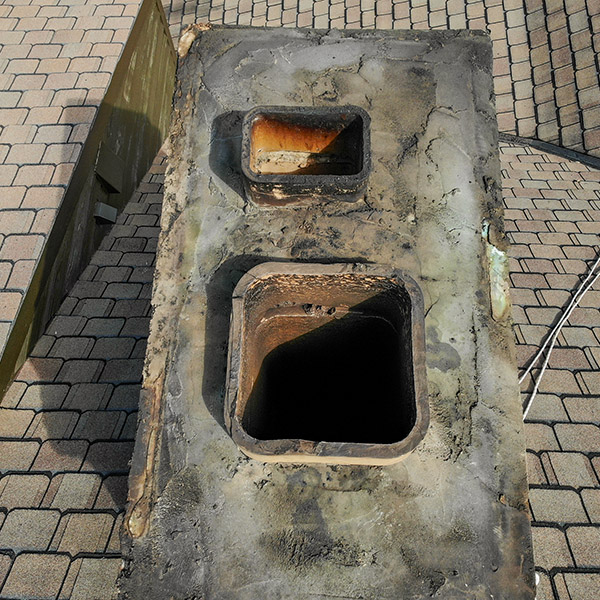 What to do if there’s a chimney fire
What to do if there’s a chimney fire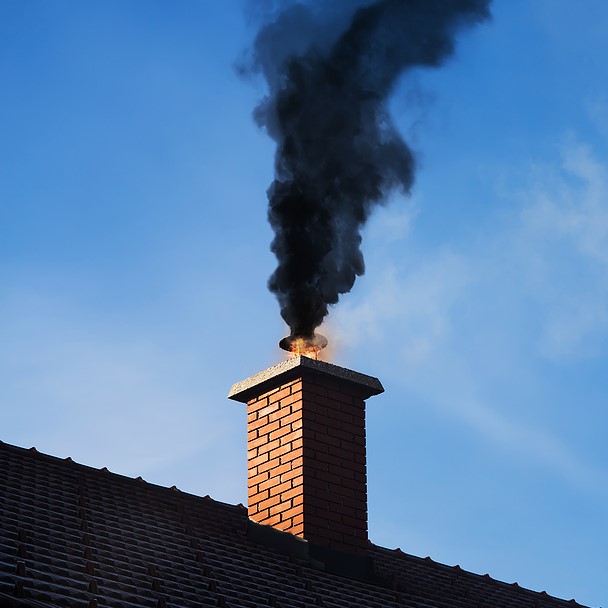 A clean and properly maintained chimney should never have fiery sparks popping out of its top. Unfortunately, not all chimneys are clean and maintained. Fluesbrothers Chimney & Fireplace offers the following advice should you experience this potentially dangerous problem.
A clean and properly maintained chimney should never have fiery sparks popping out of its top. Unfortunately, not all chimneys are clean and maintained. Fluesbrothers Chimney & Fireplace offers the following advice should you experience this potentially dangerous problem.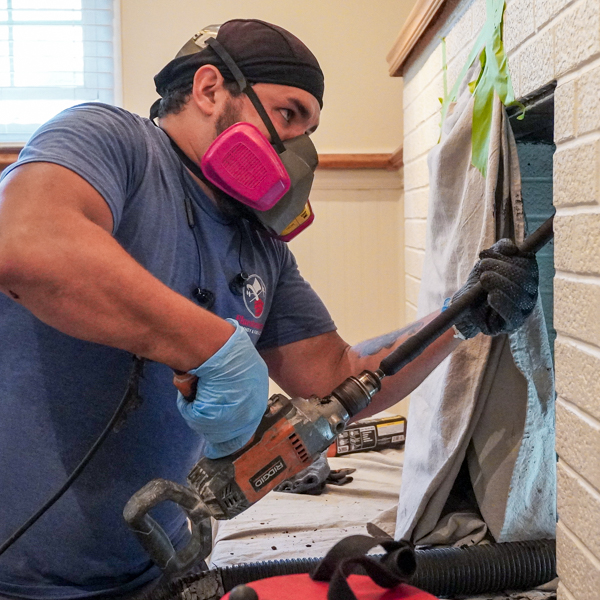 Chimney technicians are trained in the use of a variety of industry-grade tools to safely and effectively remove creosote from your chimney flue. An annual chimney sweep is an excellent step toward preventing chimney fires.
Chimney technicians are trained in the use of a variety of industry-grade tools to safely and effectively remove creosote from your chimney flue. An annual chimney sweep is an excellent step toward preventing chimney fires. First, are sparks coming out of your chimney a problem?
First, are sparks coming out of your chimney a problem? Ongoing chimney maintenance to prevent sparks and embers
Ongoing chimney maintenance to prevent sparks and embers
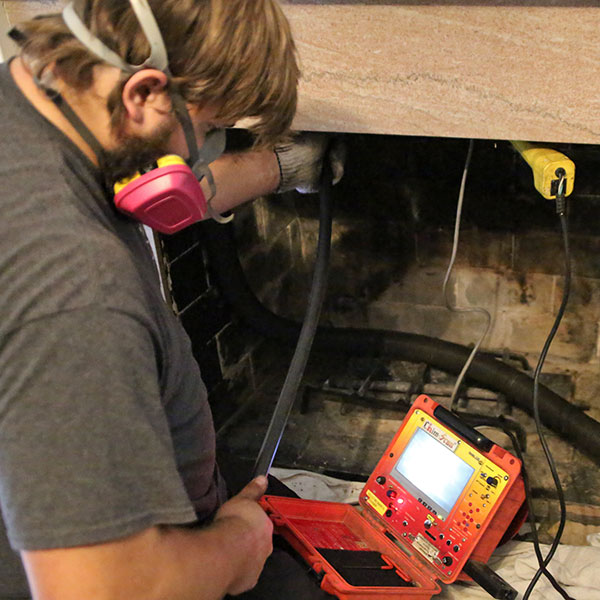 If smoke is backing up into your home, your biggest concern is the carbon monoxide that smoke carries. Carbon monoxide is invisible and odorless, but it is known to be potentially fatal to people and pets when inhaled.
If smoke is backing up into your home, your biggest concern is the carbon monoxide that smoke carries. Carbon monoxide is invisible and odorless, but it is known to be potentially fatal to people and pets when inhaled.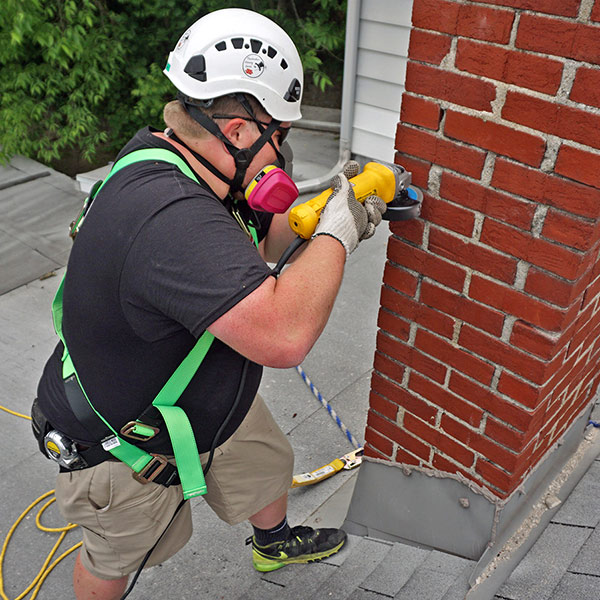 Even the smallest cracks in your chimney bricks can lead to big trouble down the line. The same with mortar that’s crumbling. When water penetrates masonry, it can begin a cycle of deterioration. If the moisture freezes in cold weather, it will expand and cause more masonry damage.
Even the smallest cracks in your chimney bricks can lead to big trouble down the line. The same with mortar that’s crumbling. When water penetrates masonry, it can begin a cycle of deterioration. If the moisture freezes in cold weather, it will expand and cause more masonry damage.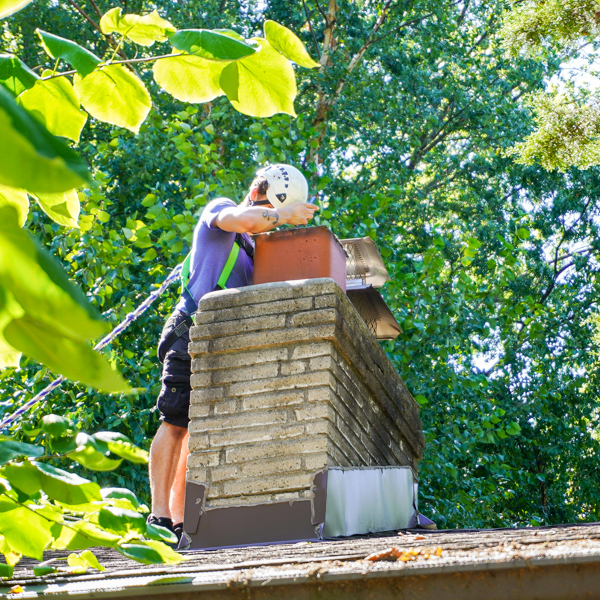 What a chimney inspector does
What a chimney inspector does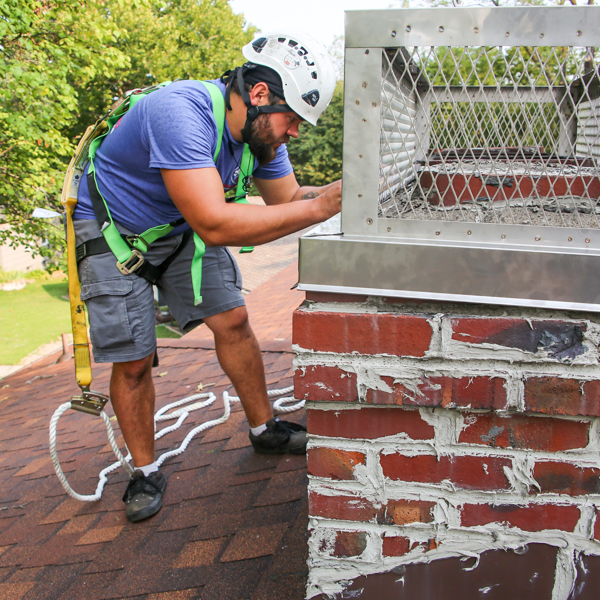 Chimney cap, crown and flashing damage
Chimney cap, crown and flashing damage Tip #1 – Schedule A Chimney Inspection
Tip #1 – Schedule A Chimney Inspection
 The purpose of a chimney is to draw smoke and toxic gases up and out of a home. If the flue becomes blocked by animal nests, residue from smoke (called creosote), broken masonry, dead animals, etc. The smoke and toxic fumes have nowhere to go except back into your home. This can lead to carbon monoxide poisoning. Carbon monoxide is an invisible and odorless gas so you won’t notice it until it is too late. Symptoms of carbon monoxide poisoning are confusion, headaches, difficulty breathing, nausea, loss of consciousness and even death.
The purpose of a chimney is to draw smoke and toxic gases up and out of a home. If the flue becomes blocked by animal nests, residue from smoke (called creosote), broken masonry, dead animals, etc. The smoke and toxic fumes have nowhere to go except back into your home. This can lead to carbon monoxide poisoning. Carbon monoxide is an invisible and odorless gas so you won’t notice it until it is too late. Symptoms of carbon monoxide poisoning are confusion, headaches, difficulty breathing, nausea, loss of consciousness and even death. Masonry can become cracked for a variety of reasons. The first is the changing weather, over time the brickwork will begin to crack and even crumble due to the cycle of freezing and thawing. Heavy winds and water damage can lead to large cracks.
Masonry can become cracked for a variety of reasons. The first is the changing weather, over time the brickwork will begin to crack and even crumble due to the cycle of freezing and thawing. Heavy winds and water damage can lead to large cracks.